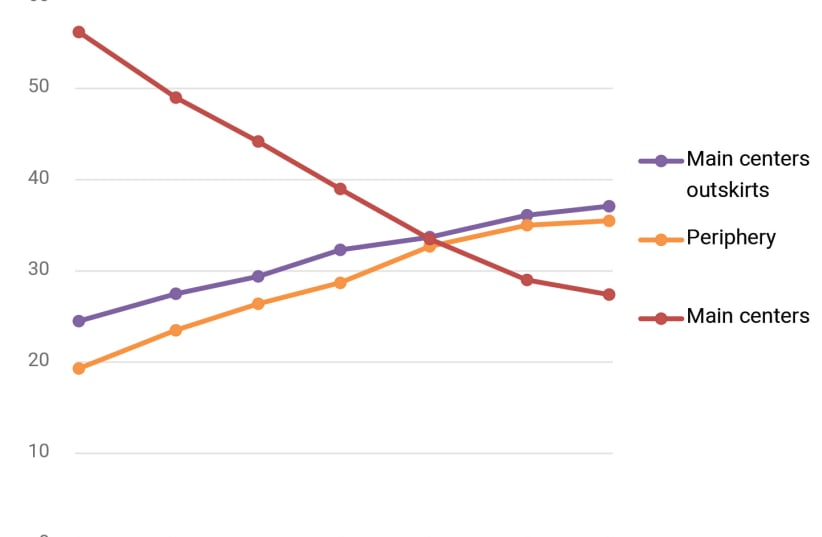On the occasion of the 70th anniversary of the plan, and as the 73rd Independence Day approaches, we look at the dispersal of the population in Israel.
In 1948, 872,700 residents lived in Israel. The most populated district was the Tel Aviv district, where 36% of the population (305,700 residents) lived. The second largest district was the Haifa district, where 21% resided. The Southern district was the smallest, with only 2.5% of the population living there. The population of the central districts (Tel Aviv and Haifa) numbered, therefore, 56% of the country’s residents, the population of the main centers outskirts (Central and Jerusalem districts) numbered 25%, and 19% of the country’s population lived in the peripheral districts (North and South).
Today, the planning policy is very different from that of Arieh Sharon, but to a large extent it can be said that his vision was a success. In 2019, only 27% (vs. 56%) of the country’s residents lived in the central districts, 37% (vs. 25%) on the main centers outskirts, and 36% (vs.19%) in the periphery (including the West Bank). The large centers lost more than half their weight at the time of state formation, while the periphery doubled its, but still not reaching the main centers’ outskirts, which in the meantime have developed into large centers.
Sharon’s emphasis on cities is also reflected in the data. Israel is characterized by a very high percentage of urban population. A population living in urban localities generally enjoys a wider range of options in different fields, such as employment, education and culture, while the rural population enjoys other benefits. According to the World Bank and the United Nations, more than 92% of the population in Israel lives in urban localities, a very high percentage compared to the average in Europe and North America. In 1960, the percentage of urbanization in Israel was only 77%, though even then a world leader. The 1960s and 1970s were years in which the percentage of urban residents in Israel rose sharply, reaching 90% in 1983.
Happy celebrations, Center or periphery.
